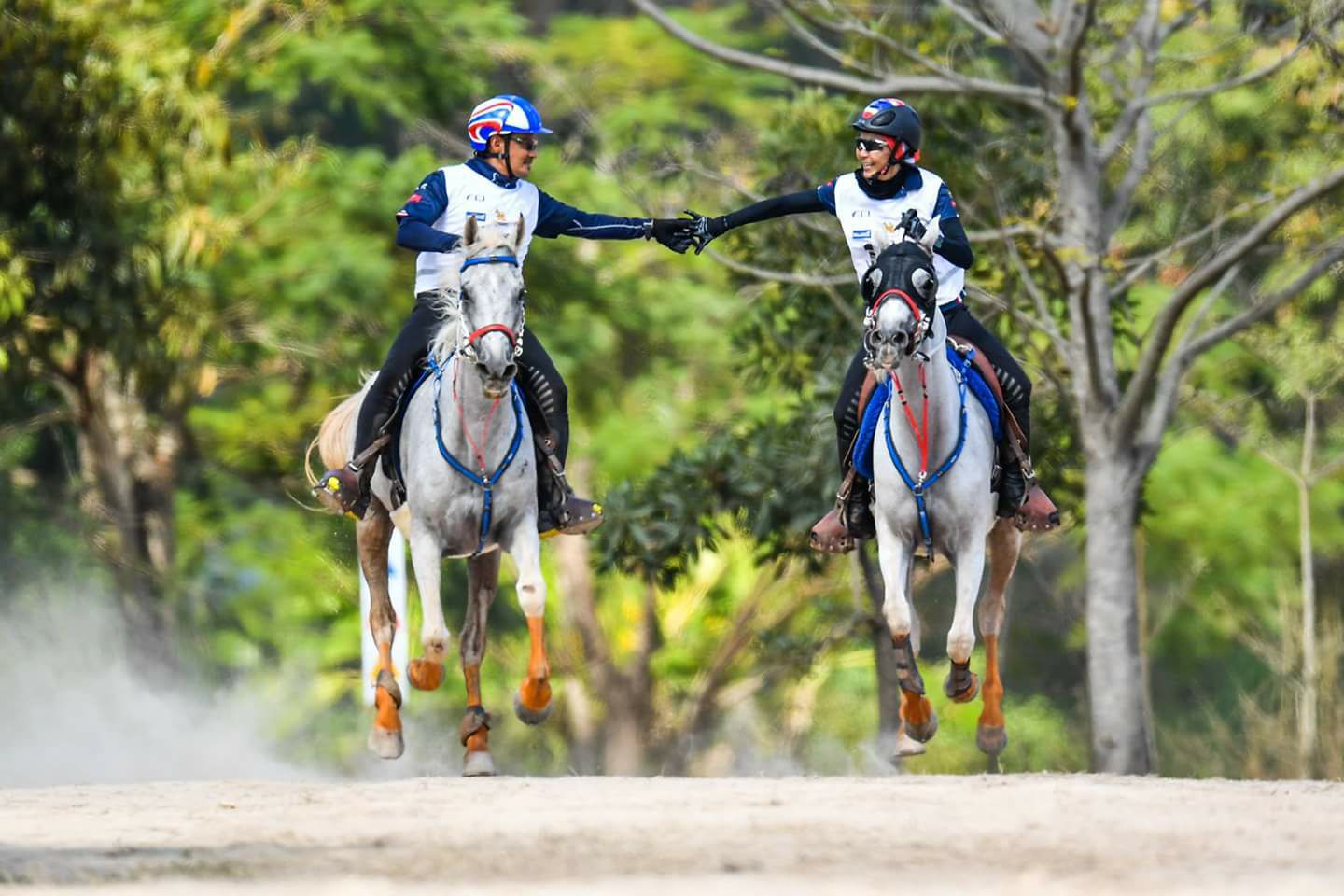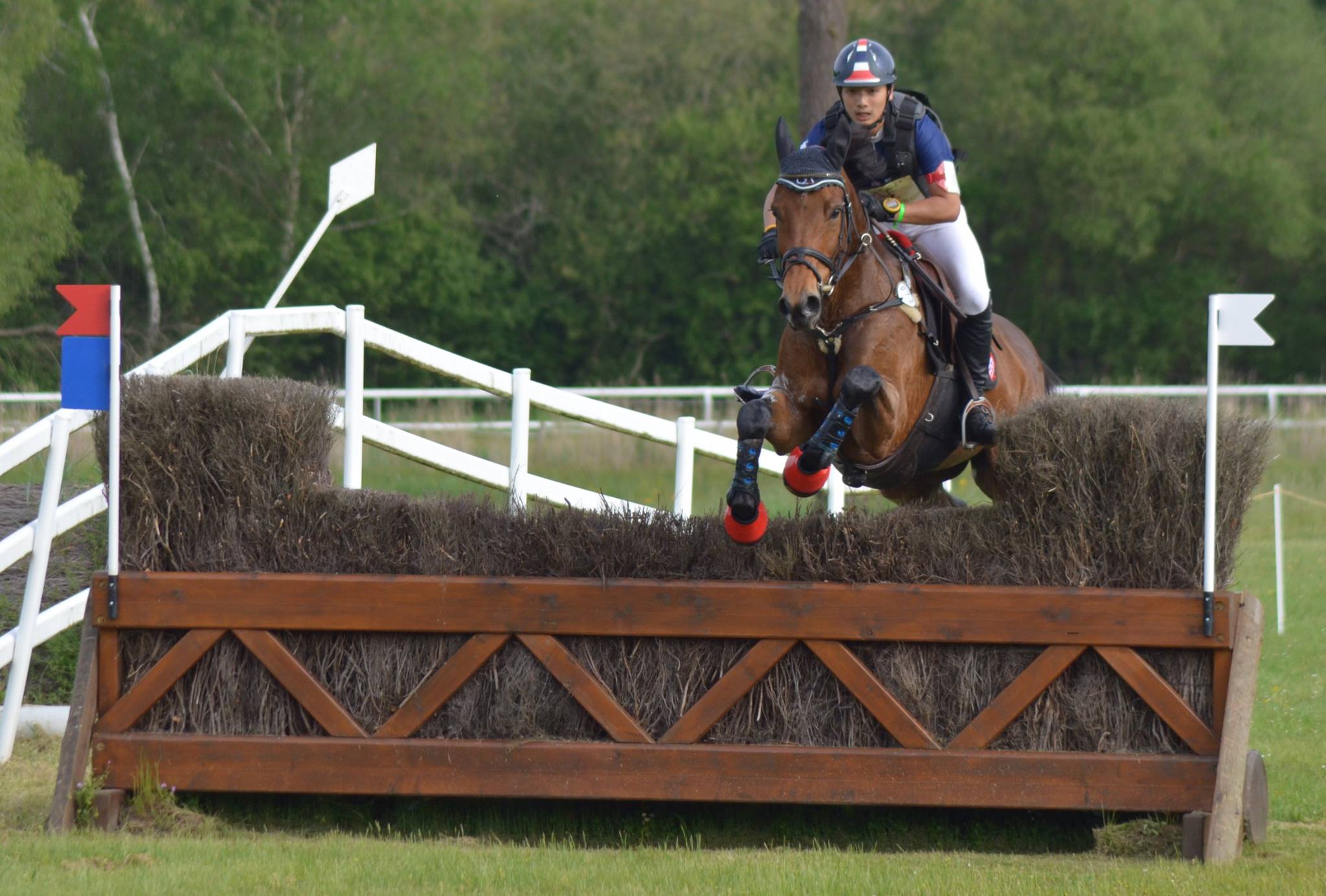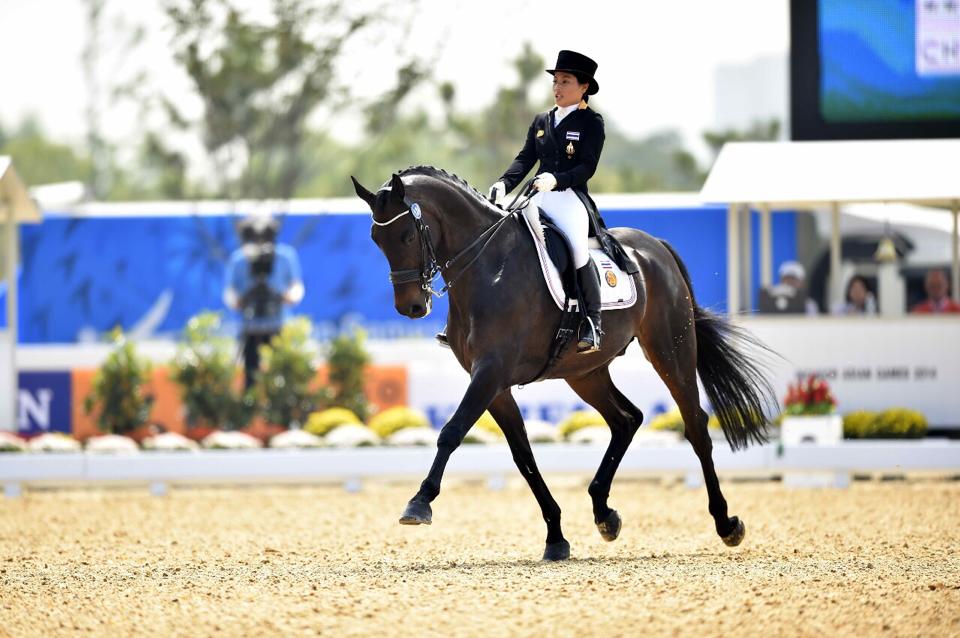Introduction
Jumping competition dates back to the 19th century. The first Grand Prix jumping event held in Paris in 1866 enhanced the international status of the sport. Jumping became an Olympic discipline in 1900, with two categories – High Jump and Long Jump. In the early years, the military dominated the event until the first civilian won the gold medal in the 1952 Helsinki Games.
Rules
The rider and horse combination is required to clear a series of 10 to 13 obstacles in the prescribed order along a set course, to test the pair\’s skill, accuracy and training. The obstacles include vertical obstacles, spread obstacles, water jump, double/treble combinations as well as walls.
For more details, please refer to competition format and rules. The French version is available here.
Judging
– If the horse refuses to jump or knocks down the fence(s), the rider will incur 4 penalty points. If they exceed the time allowed, additional penalty points will be incurred.
– The horse and rider will be eliminated after a second refusal as well as any fall.
-The winner is the horse and rider combination with the least penalty points. In the case of a tie, the competitors will enter into a jump-off round to determine the ranking. In case of another tie, the combination with the fastest time wins.
After horse inspection, 77 athletes from 29 nations compete in Jumping in 2008.
Showjumping หรือ การขี่ม้ากระโดดข้ามเครื่องกีดขวาง
กีฬาประเภทนี้ ได้รับความนิยมจากผู้ชมทั่วไป เป็นอย่างมาก เพราะมีความสนุก, ตื่นเต้น, เร้าใจ ตลอดจนเข้าใจง่าย ศึกษา กฎ กติกา คร่าว ๆ ก็พอจะเข้าใจ ซึ่งหลักจริง ๆ มีอยู่ไม่เท่าไหร่ สามารถลองให้คะแนนเอง ร่วมไปกับกรรมการได้ อีกทั้งเมื่อผู้เข้าแข่งขัน แข่งเสร็จในแต่ละคนผู้บรรยายสนามจะสรุปคะแนนให้ฟัง ซึ่งผู้ชมสามารถจดบันทึกตามไปด้วย ประกอบการชมการแข่งขัน จะทำให้เกิดอรรถรสในการชมการแข่งขันมากยิ่งขึ้นไปด้วย โดยกติกาง่าย ๆ โดยเริ่มจากผู้เข้าแข่งขันทุกคนมีคะแนนเสียเท่ากัน คือ 0 คะแนนในตอนเริ่ม โดยผู้เข้าแข่งขันจะต้องนำม้าของตน กระโดดข้ามเครื่องกีดขวาง ตามหมายเลขเครื่องและแบบของสนาม ซึ่งผู้ออกแบบสนาม(Couse Designer) เป็นผู้ออกแบบไว้ จนครบ โดยใครที่มีคะแนนเสียน้อยที่สุดจะเป็นผู้ชนะ
ทีนี้ลองมาดูกันครับว่า คะแนนเสียในการแข่งขันเกิดขึ้นได้จากอะไรบ้าง
– คะแนนเสียจากการกระโดด
– ม้าเตะเครื่องตกพื้น ซึ่งจะมีคะแนนเสียเครื่องละ 4 คะแนน โดยเครื่องตกกี่เครื่อง ก็คูณ 4 เข้าไป
– ม้าปฏิเสธเครื่อง โดยเบรคหน้าเครื่องกีดขวาง หรือ หลบออกทางข้างทั้งซ้ายและขวา โดย ถ้าปฏิเสธครั้งที่ 1 จะเสีย 4 คะแนน เช่นเดียวกับเตะเครื่องตก แต่ถ้าเกิดปฏิเสธครั้งที่ 2 แสดงว่าม้าไม่พร้อมที่จะแข่งขัน ต่อไป ต้องถูกให้ออกจากการแข่งขัน ( Elimination )
– คะแนนเสียจากการใช้เวลาเกิน ก่อนการแข่งขันจะเริ่มขึ้น ผู้บรรยายสนาม จะประกาศให้ทราบถึง เวลาที่ใช้ในการแข่งขัน ด้วยกัน 2 ประเภทเวลา คือ
– เวลาที่ยินยอม ( Time Allowed ) ผู้เข้าแข่งขันจะต้องทำเวลาในการผ่านจากเส้นเริ่มต้น ( Start Line ) จนถึงเส้นจบ ( Finish Line ) น้อยกว่าเวลา Time Allowed ที่กำหนด แต่ถ้าใช้เวลาเกิน จะมีคะแนนเสียเพิ่มขึ้น อีก 4 วินาทีต่อ 1 คะแนน ยกตัวอย่างเช่น Time Allowed คือ 97 วินาที แต่ นาย ก กับม้า A ทำเวลาได้ 99วินาที ซึ่งเกิน Time Allowed 2 วินาท(อยู่ใน 4 วินาทีแรก) ก็จะทำให้ นาย ก กับม้า A มีคะแนนเสียเพิ่มจากคะแนนเสียจากการกระโดด อีก 1 คะแนน …ใน Case เดียวกัน หาก นาย ข กับม้า B ทำเวลาได้ 103 วินาที ซึ่งเกิน Time Allowed 7 วินาที (อยู่ใน 4 วินาทีที่สอง) ก็จะทำให้นาย ข กับม้า B มีคะแนนเสียเพิ่มจากการกระโดด อีก 2 คะแนน เป็นต้น
– Time Limit หรือเวลาที่กำหนดจะเท่ากับ 2 เท่าของ Time Allowed ยกตัวอย่างเช่น Time Allowed เท่ากับ 97 วินาที ดังนั้น Time Limit จะเท่ากับ 194 วินาที เป็นต้น ผู้ขี่ม้าจะต้องทำเวลาได้ภายใน Time Limit ที่กำหนด ถ้าเกินแม้แต่เสี้ยววินาทีเดียวจะต้องออกจากการแข่งขัน (Elimination)
– ถ้าผู้เข้าแข่งขันตกม้า ต้องถูกออกจากการแข่งขัน( Elimination)




